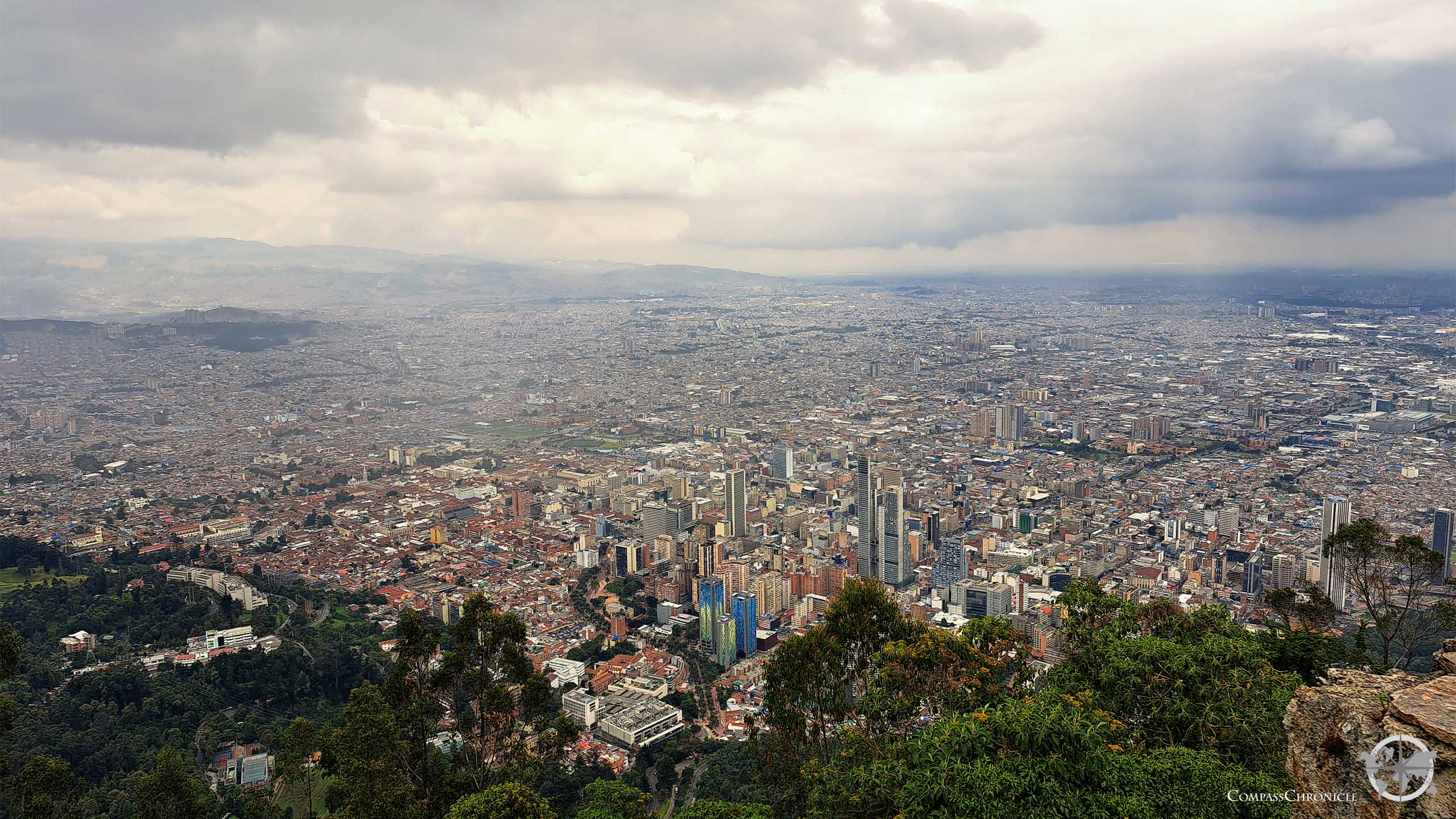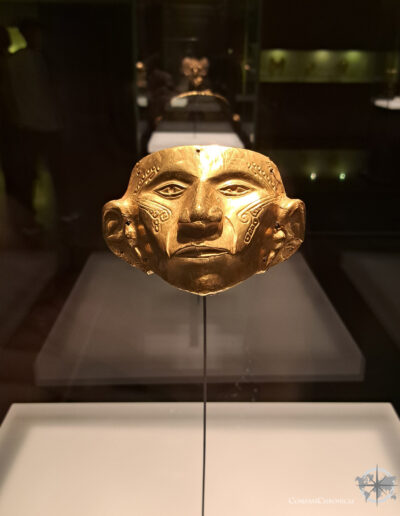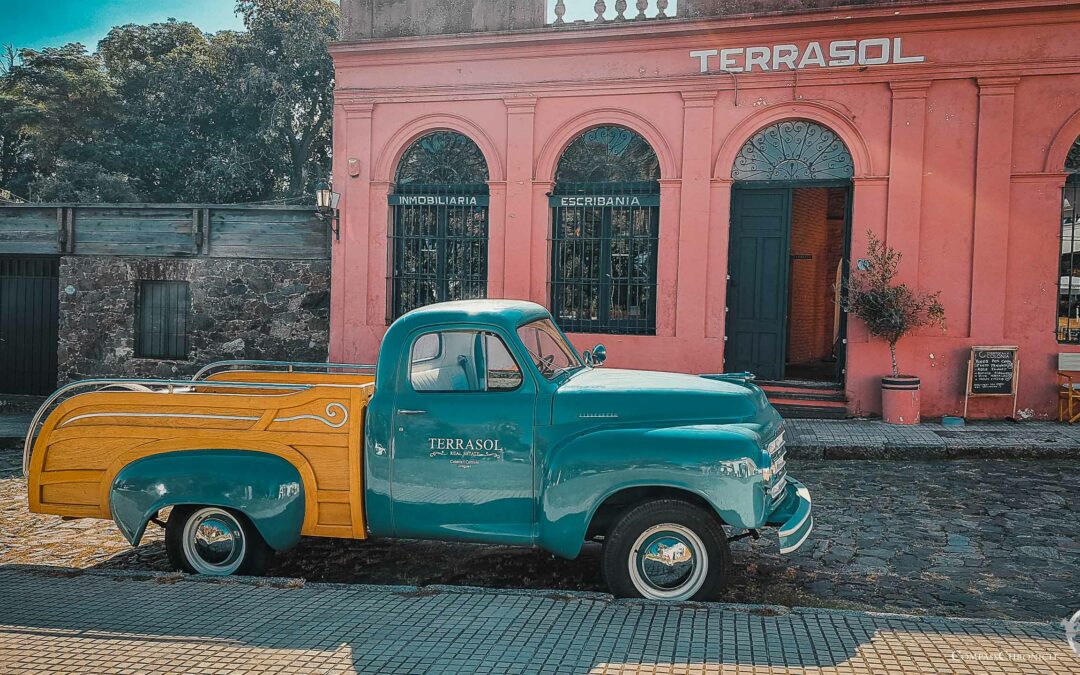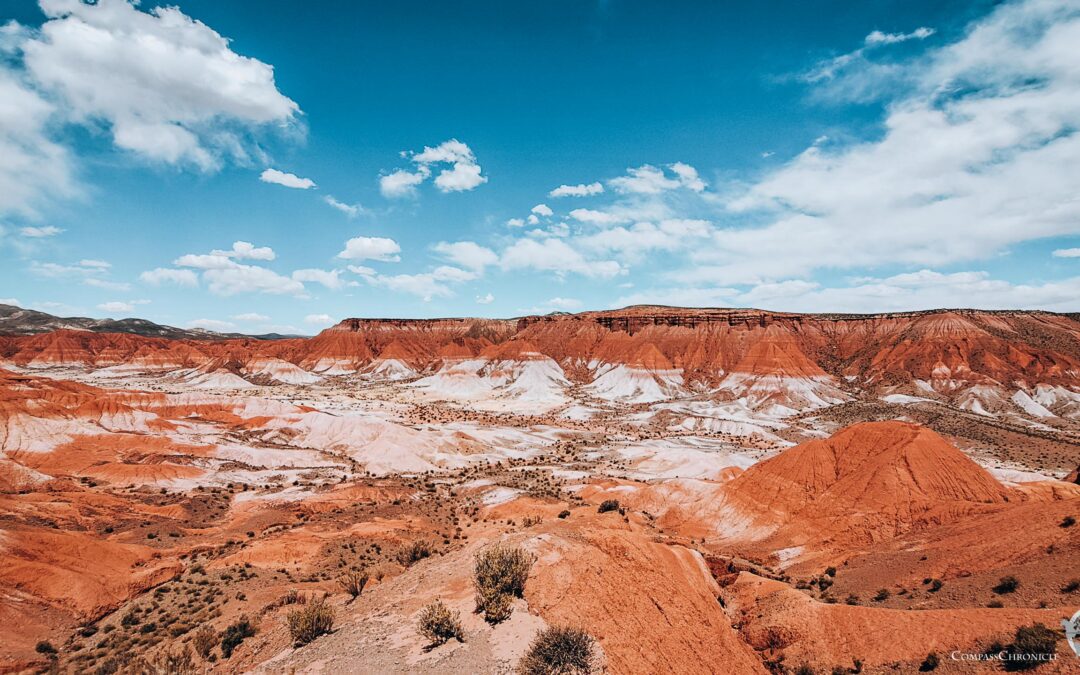Our journey continues towards the real mega-city: Bogotá. With almost 8 million inhabitants, the capital of Colombia has about as many inhabitants as the whole of Switzerland! We are curious to see what a city of millions in Colombia feels like, sounds like and what we will experience. On the way into the city, we first stop at a place of interest that is normally offered as a day trip from Bogotá. With our campervan Ben, it’s right on our route and we make an afternoon stop at the Salt Cathedral.
Salt Cathedral
At first, we couldn’t really imagine what a salt cathedral was. It turns out that we are descending into a former salt mine. However, the stone is dark grey and not white like salt, and the entire mine tunnels are correspondingly gloomy with beautiful colorful accents from various lights. And it is a religious place through and through. The way of Jesus’ crucifixion is artistically realized with various monuments carved in stone. Via the various stations along the way, we slowly arrive at the actual cathedral, 180m below the earth’s surface. The full impressiveness opens up to us when we finally stand in the main nave of the cathedral. A high room, certainly 15m high or more, forms the nave.
Really impressive scenery, but of course all about the Christian religion and the connection to the mine is now clearly in the background. We would have liked to see a little more mining in the whole attraction, especially as the entrance fee is relatively expensive by Colombian standards – but it was still worth the experience.
Admission: 110’000COP ∼ 25.75CHF
Mon-Sun 09.00-17.45 hrs
Arrival in Bogotá
Because there are now restrictions on vehicles in Colombian cities, we are only allowed to drive every other day during the week. Quite a hassle to get used to. However, this means that we drive until dusk so that we can reach Bogotá without any restrictions. We park our campervan Ben for the time in Bogotá in a paid and supervised parking lot, where we can also sleep in the van. This is a good solution for us, as we can reach everything in Bogotá with short cab rides (up to 30 minutes).
Museo d’Oro and Barrio La Candelaria
First, we visit the famous gold museum near the old town in the La Candelaria district. The history of the precious metal, which goes back a long way before the Spanish, is presented in abundance, including from the perspective of the indigenous peoples. The breast plates and facial jewelry of the indigenous peoples are particularly exciting for us. Filigree pieces of jewelry were made from gold alloys and worn by the tribal leaders. The importance of gold as a valuable metal was only brought to Colombia much later through Spanish colonization.
Although we are not usually big museum-goers, the gold museum really impressed us and we can highly recommend it.
Admission: 5’000COP ∼ 1.20CHF
Audio guide: 8’000COP ∼ 1.90CHF
Tue-Sun 09.00-18.00, Mon closed
After the museum visit, we take a leisurely stroll through Bogotá’s old town, the Barrio La Candelaria. We see some beautiful old houses and, of course, Bogotá Cathedral. Contrary to our expectations, we feel quite safe in Bogotá’s old town and move around on foot without any restrictions. This allows us to move seamlessly from the historic buildings to the modern graffitis and murals. What a contrast: one street is still home to the old town, and in the next we can see artistically created murals. We enjoy these strong and obvious contrasts. This is probably a peculiarity of large Central and South American cities. One street is dedicated to one theme and the very next street has a completely different character.
Parque Metropolitan Simón Bólivar
In a big city like Bogotá, which is already reasonably green and always has trees and small parks, we nevertheless make a detour to the largest of all parks in Bogotá, the Parque Metropolitan Simón Bólivar. This park is so big that we forget the big city around us. There is also an artificial lake in the middle where pedalos are rented, especially at weekends. During the week there is not much going on and we have most of the green spaces to ourselves.
Right next to the park is a public library in a round building. We don’t miss it as Mimi in particular is naturally very interested in it. The unusual shape also defines the interior spaces such as the reading rooms. A really a well-designed library. Many places in the library invite you to do research and work. If we lived in this city, we would probably come back a few times.
Monserrate
Bogotá is already at 2640m, but it still stretches higher. Many chains of hills surround Bogotá and Monserrate in particular is a place of pilgrimage for devout Colombians. We take the funicular and within a few minutes we have an overview of the entire city. Almost 8 million people live in the city. So, we are looking out over a plain with almost as many inhabitants as the whole of Switzerland – amazing! What’s more, we really don’t feel like we’re at an altitude of 3150 m. In this region of Colombia, the hills are still densely greened, even with tall trees. This is truly an experience once again, all the conditions we are used to are shifted by a few hundred meters in altitude here.
Funicular & cable car: 29’500COP ∼ 6.95CHF | Sundays 17’500COP ∼ 4.20CHF
Funicular: Mon-Sat 06.30- 11.45 hrs, Sun 06.30- 17.30 hrs
Cable car: Mon-Sat 12.30- 23.30, Sun 10.30- 16.30
Incidentally, there is another cable car from the same station as the funicular. You could actually take the funicular up and the cable car back down – if you time it right! This is because the funicular runs in the morning and the cable car in the afternoon. Unfortunately, the cable car was being overhauled during our visit.
And also important: you can also walk up, but it is advisable to only walk in larger groups, as there are always muggings along the way!
With these experiences, our stay in Bogotá has already come to an end. We were pleasantly surprised by the city, perhaps because we didn’t have too many expectations before we went to Bogotá. Our next stage takes us on to Medellín. This means we have to leave all the altitude and the temperate climate behind us. Driving down 500 meters in altitude – which means, among other things, extremely high humidity and temperatures of up to 40°C – and then driving up the mountain range that runs almost parallel in which lays Medellín.




































0 Comments